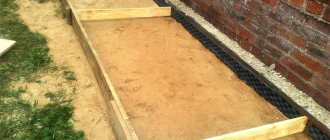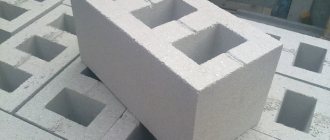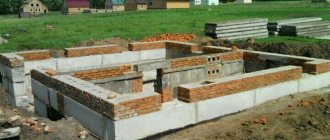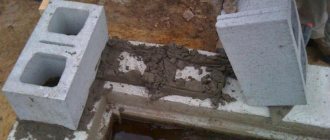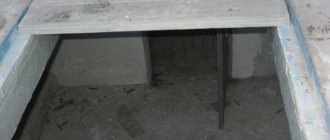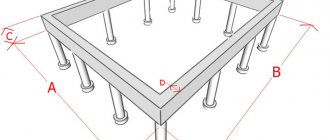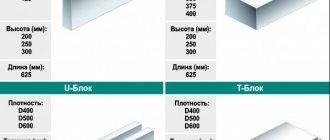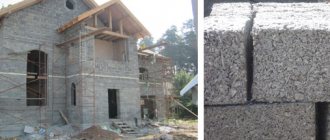Varieties
The structure made of reinforced concrete material is presented in two types:
- monolithic;
- team.
This type of reinforced concrete structures is very popular among motorists. Its installation does not take much time and effort. Companies that sell ready-made reinforced concrete garages also offer installation (or dismantling) services. The company transports the concrete object to the desired location and assembles it (within one hour) at the construction site.
There are several types of buildings:
- a structure that is assembled and installed. site;
- finished object (assembled at the factory, transported to the customer).
In the second case, the main parameters of the structure are determined by factory standards. Customers who want to connect the structure to the house (place it in the basement or make it part of the first floor) resort to the first option, place an order, and agree on the dimensions. In this case, the price may differ in one direction or the other. This will depend on the complexity of the building, its size, installation time and other things. Each company has service catalogs describing prices and all the details of the process. Check out the details: do you need an inspection hole, floor, cellar, etc.
Some companies call such structures “mini-constructors”. Parts of such structures are created separately from each other. The smallest details are taken into account so that when all the parts are in the desired location, installation does not take much time. In the catalogs of companies you can look at previously completed and possible models of similar garages. Some of them do not require specialist intervention. Thus, you can save on the services of builders.
Reinforced concrete structures are built from:
- concrete blocks;
- wall panels (additionally, slabs are used to cover the space).
In the latter case, the kit includes all the tools (as a set) for installing the building. The main advantage that such a garage has is variety. Blocks or panels can be adjusted to any size required by the customer. Such constructions best meet the operational requirements and desires of customers. You can create a building with cellars, an entire garage park or a workshop. You can easily place an inspection pit or additional rooms for employees or craftsmen inside.
Types of concrete garages
Reinforced concrete and concrete products factories offer land owners a wide range of products to solve the “garage problem”. There are two main types of reinforced concrete structures:
- prefabricated;
- monolithic.
Precast concrete garages can be constructed from either wall panels or floor slabs. In the second case, you can purchase a complete set of prefabricated elements, including fasteners. The advantage of prefabricated structures is the ability to build a structure of any size and configuration that meets the specific conditions of the land and operational requirements. This could be a standard concrete garage with a cellar for one car or a garage complex with workshops, inspection pits, and rooms for workers.
Monolithic reinforced concrete structures are also divided into two types: those constructed on site and ready-made “boxes” of factory production. In the first case, the size and layout of the object are determined individually by the owner. Catalogs of ready-made modules from manufacturers offer a wide range of designs: with a floor, without a floor, with ready-made openings for constructing inspection pits and cellars. You can purchase two-row blocks for a garage cooperative or order a design based on an individual project.
Return to contents
Dimensions
Solid blocks are made in the following sizes:
- 2.40x5 m;
- 48x2 m;
- 1.9x2.8 (for garages with an opening for a gate).
The wall thickness ranges from 80 to 120 mm.
The value must correspond to the rib thickness and is calculated separately for each block. Such a garage can be built of absolutely any size. Let's look at an example of building a garage for one place. For construction, panels of specified sizes are used: length 5-6 m; width 4 m; height 2.3-2.6 m. If such parameters do not satisfy the customer’s needs, a special design is purchased. They are available in different sizes and greatly facilitate the construction process.
Advantages and disadvantages
Let's look at the good and bad sides of solid concrete buildings. Advantages:
- construction according to an individual plan is possible;
- possibility of dismantling;
- reliability and strength, such reinforced concrete structures are installed “once and for all.”
Flaws:
- the construction process takes several days;
- in order to speed up construction, the use of special equipment is required, and this means additional costs;
- redevelopment is impossible;
- during repairs, you should find a room for storing building materials;
- size restrictions.
The situation is a little better with reinforced concrete structures, which are manufactured separately. Advantages:
- large selection of tile coverings;
- you can purchase already finished materials, which will reduce repair time;
- construction will take about 4-6 hours;
- possibility of dismantling;
- You can use a concrete room an hour after installation.
Flaws:
- blocks may become deformed if improperly stored and used.
Advantages and disadvantages of a concrete garage
A concrete garage, like other types of garage premises, has certain advantages, as well as a number of disadvantages.
The positive characteristics of reinforced concrete structures include:
- long period of use. Provided that the manufacturing technology is followed and a high-quality solution is used for concreting, the hardened monolith is able to retain its properties for a century;
- increased safety margin and increased level of reliability. It is difficult to damage a structure made of reinforced concrete. There is no doubt about the safety of a vehicle located in a concrete room;
- Fire safety. In a garage where oils, fuels and flammable liquids are stored, there is a risk of fire situations. The concrete structure is not subject to combustion;
- maintainability. In the event of cracks or local defects, it is easy to seal cavities in the solid using a cement solution, special putty or plaster composition;
- installation speed. Compared to stone or wooden buildings, the construction of which requires a long time, a ready-made reinforced concrete garage is installed on a prepared site in a couple of hours with the help of a team of workers;
- vandal resistance. It is problematic for attackers who traditionally use a jack to lift floor elements to violate the integrity of a monolithic structure made of reinforced concrete;
- a variety of design options for ready-made concrete garages. When ordering products, an opening for the doors is made in the desired location, and the concrete base slab is equipped with an opening for access to the inspection pit or basement.
As for the disadvantages, the main disadvantage of building concrete garages is the impossibility of rebuilding, disassembling and moving to another location
Reinforced concrete structure also has weaknesses:
- increased mass. Weighing more than 12 tons, special equipment is required for transportation and installation, and during installation you should worry about constructing a crushed stone-sand cushion;
- increased construction costs. The increased material consumption of reinforced concrete structures, in the manufacture of which expensive plasticizers are used, increases the total cost;
- difficulties during transportation. It is necessary to use special equipment. Violation of transportation rules causes deformation and impairs performance characteristics.
When giving preference to a reinforced concrete garage, you should carefully study the advantages and also analyze the disadvantages.
Technology
For prefabricated garages
Let us consider the features of the construction of buildings of this type. After purchasing such a structure, the factory issues special instructions if you decide to do the installation process yourself. It describes all the necessary steps to build a durable building. After the foundation is laid out, construction can begin. Main stages:
- install floor slabs;
- assemble and install side panels;
- install the rear wall of the garage;
- fix the installed panels;
- pass (it is desirable that the gate be metal);
- install floor slabs;
- arrange the roof.
Use brackets to hold the blocks together.
No welding work is carried out. You can choose the finish, color and design yourself. We recommend that you level the surface with plaster. This will immediately give the garage a well-groomed and aesthetic appearance.
To install concrete buildings of this type, the help of lifting equipment is required. The gate can be installed without welding. Main stages:
- Obtain permission to erect a solid building from the appropriate authorities. It is impossible to start construction without receiving a special document.
- After purchase, the factory will provide you with special instructions. Follow her advice and get great results.
- Build a foundation (the best option is a strip foundation).
- Install the slabs in the trench, fasten them together, and waterproof them.
- Solve the problem with ventilation (it is better to choose natural ventilation).
It can rightly be called a leader in durability among garages - no structure made of foam blocks, profiled sheets or wood can last as long as a concrete “box” will last. In addition, they are erected faster than brick
or
cinder blocks
.
And in front of the standard structures is a monolithic concrete garage
, assembled with your own hands, has the advantage of being able to independently determine the size and area of the building.
As for the disadvantages, the main disadvantage of building concrete garages is the impossibility of rebuilding
, disassembly and transfer to another location.
If you made a house for a car out of concrete
, then you made it “seriously and for a long time”, and when you move you won’t take it with you, and to expand the garage you will first have to demolish the old one.
The second disadvantage of reinforced concrete buildings
The problem is that to build them you will need to rent heavy equipment and allocate a lot of space on the site for storing building materials and concrete slabs (if you decide not to pour a concrete garage, but to assemble it like a construction set).
When does it make sense to build it?
Construction of a concrete
doing it yourself is a labor-intensive and rather complicated task, so you need to understand how much you need it and how often you will use it.
If it is intended for the site where your house is located and where you permanently live, there is no question, it needs to be built.
If you decide to do it at your summer cottage, where you come only for the summer (and even then not for all of it), then you need to compare the expenditure of effort, time and money with the benefits received.
Perhaps for a summer cottage it would be more rational to build a shed garage or a prefabricated garage.
As for choosing a place for a monolithic building, it is advisable to install it separately
from your home.
First of all, this is due to the technology of constructing a concrete garage - it will be inconvenient to make it an extension. In addition, in appearance it will be significantly different from a house made of a different material, which is not very good from an aesthetic
.
Weight
A reinforced concrete building capable of accommodating a car can reach
from 15 to 25 tons
, depending on the size, the presence of a basement and space for a second car. Considering this fact, it is worth paying great attention to the preparation of the soil and soil, since the load on them will be considerable.
By the way, it is not necessary to make a monolithic garage from concrete
yourself - there is always the opportunity to order a ready-made design from one of the manufacturers. Or, as an alternative, build a garage using concrete slabs purchased from a precast concrete factory.
Standard concrete panels
can have a length of 4 to 6 meters, a height of 2.3-2.6 meters and a thickness of 80-120 millimeters. Walls are formed from them, a panel with an opening for a gate is placed on one side, a concrete slab is installed to serve as a roof, and that’s it - the garage is ready and you can drive your car into it!
But we are still interested in how to make a concrete garage
with your own hands. Let's look at this process in detail.
Garage design options
If you need to quickly build a room to store your car, you should choose a reinforced concrete garage. It is difficult for garage buildings made of composite blocks, metal sheets and wood to compete with a reinforced concrete garage in terms of durability, strength and reliability. The popularity of reinforced concrete buildings is associated with the simplicity of construction and the accelerated pace of installation work. Today it is not difficult to purchase a prefabricated or solid garage at precast concrete companies or to independently construct a monolithic structure.
Sooner or later, any car enthusiast comes to the idea that his “iron horse” needs a home
Car owners install various designs of reinforced concrete garages:
- a team consisting of industrially manufactured reinforced concrete slabs. The increased mass of the components requires the use of special lifting equipment to perform installation operations. This structure is assembled without the use of a binding solution, since reinforced concrete modules, after installation, remain immobile due to their increased mass. During assembly, electric welding can be used to connect embedded elements and fittings. Vehicle owners are attracted by the accelerated installation, ease of assembly, lack of need for a foundation, as well as the possibility of prompt dismantling of the structure;
- monolithic, manufactured at factories of reinforced concrete products in the form of a solid block. Car owners who decide to install a solid reinforced concrete garage are faced with the problem of delivering the structure to the installation site, as well as the need to use special vehicles and a lifting crane for transportation. In this regard, this design is characterized by increased cost compared to the prefabricated version. To install a one-piece garage block made of steel-reinforced concrete, the site must be carefully prepared. To do this, it is necessary to remove debris and vegetation, level the soil surface, lay and compact a sand-crushed stone cushion;
- combined, including ready-made and self-formed reinforced concrete structures. As ready-made floor elements, you can use standard slabs corresponding in size to the length and width of the garage space. The walls of such a garage are made of composite blocks, the laying of which is carried out on cement mortar or monolithic concrete. The formation of solid reinforced concrete walls is carried out by pouring concrete mixture into formwork with a pre-installed reinforcement cage. The floor is poured independently by concreting the base reinforced with a reinforcement grid.
The combined option attracts machine owners with reduced costs, an expanded choice of design solutions, as well as the possibility of constructing a room with the required dimensions.
They are erected faster than buildings made of brick or cinder blocks
Construction stages
The first item on the list of things needed to build a garage is to develop a detailed plan
, which will take into account the dimensions of the future building, foundation, roof and everything else. Careful planning and taking into account all the nuances in advance will protect you from annoying mistakes during the construction process.
In this case, you need to do them first, and only then proceed to everything else. At the same time, be sure to waterproof and drain the cellar and inspection hole - this way you will significantly extend the life of the building, protect the car from corrosion and prevent food and things stored in the basement of the garage
.
Next, a trench is dug to fill the garage with concrete.
and installation of formwork and support posts.
The depth of the trench must be at least 30 cm
, and preferably up to half a meter.
The bottom of the trench should be thoroughly compacted and the edges leveled.
Then recesses are made to install support posts, which will serve as the basis for the frame that gives the reinforced concrete walls
strength and durability.
It is advisable to achieve the same depth of the recesses; this can be done using a template plug made of concrete. When installing the supports, ensure they are vertical using a level. Also make sure that the top ends of the posts are at the same height.
Don't forget about waterproofing
. To prevent rainwater from washing away the building, concrete blind areas and rain drainage (more often referred to as “storm drainage”) should be made along its perimeter. If previously on your land or in neighboring areas the groundwater lies relatively shallow, make it under the foundation using wells.
After installing the supports you need to make a “pillow”
from a mixture of sand and gravel.
With a trench depth of 0.5 meters, its compacted thickness should reach 15-20 cm. Now you can install formwork
, the material for which can be boards or plywood.
The formwork frame is made of timber. Do not forget to fill floor
, preferably using reinforcement made of steel rods.
Inner width
formwork should be equal to
the thickness
of the future walls.
How thick are the walls
of a concrete garage?
Their minimum thickness should be 80 mm
, optimally
100-150 mm
.
In the middle, between the sheets of outer and inner formwork, a grid of steel rods is laid, which will serve as a reinforced frame
. Horizontal reinforcement bars are welded to the support posts.
Now the main stage of building a monolithic garage begins - pouring the walls
.
The space between the formwork is filled with concrete, which should be well compacted on top (especially at the corners) and leveled. As soon as the bottom layer of the walls has dried, we remove the formwork from it and install it higher, repeat the operation of pouring concrete in the garage until the walls are completely erected
.
How to cover a concrete garage? If you are planning a concrete
, then it is made in the same way as the walls, but below for the formwork you will need supports made of logs or very thick timber.
They should be located often enough to prevent collapsing
.
Otherwise, it is necessary to install longitudinal beams in pre-prepared recesses, lay boards and roofing felt on them for waterproofing. Tiles, slate or corrugated sheets are laid on top of this “pie” - the roof is ready
.
In order for a monolithic garage to be warm in winter, it also needs thermal insulation. The latter is often made using foam plastic
or other similar material. It is attached to the walls using a special solution, and a plaster mesh is glued on top of the foam.
For heating
In the resulting room, you can use
radiators
connected to a centralized network or to an electric boiler. An alternative to batteries can be water or electric convectors.
The final stage of construction is external and. To do this, you can use plaster, both regular and colored versions. If you love wood, then the inside of a monolithic garage can be covered with clapboard. How to paint concrete walls in a garage? It is better to use acrylic facade paints
. And from the outside, if you are not short on funds, the building can be decorated with decorative stone.
Properly built monolithic concrete garage
will become a reliable shelter for your car for many decades. It is possible that even your children and grandchildren will park their cars in it.
Step-by-step instructions for making it yourself
A very labor-intensive process will be fully compensated by minimizing financial costs. For determined and enthusiastic car enthusiasts and car professionals, it may be suitable. Lately, people have resorted to this option quite rarely, but if you have already decided, then you need to find out how to do it.
- Make a trench around the perimeter as usual for a strip foundation; the depth should be at least half a meter.
- Install supports and a frame made of timber along the intended perimeter.
- Mix fine crushed stone with sand and compact it over the entire area; this layer should be at least 20 cm.
- From the trench, begin the construction of plywood formwork.
- The width of the cavity for filling the walls should be at least 80 mm, but it would be more optimal to make a 150 mm width.
- Special steel gratings are placed inside the formwork.
- The floor is reinforced with the same type of reinforcement. You just need to lay the grates over the compacted gravel area. This will be a steel frame distributed over the entire area of the structure.
- Next, start pouring the walls, layer by layer. Each new layer is poured as it dries.
- And so on until the formwork cavity is concreted to the top.
- The roof is poured according to the same principle as the walls, but supports of very high strength are needed, for example logs or thick timber. They must be placed as much as possible, evenly over the entire area, otherwise the ceiling will collapse.
It is important to take care of ventilation, then the garage will last longer, as this will also reduce the humidity in the room, which has a destructive effect on concrete during temperature changes and frosts.
Finish options
- The garage is finished with siding, clapboard, and ceramic tiles.
- You can cover it with plaster and paint the room.
Possibility of heating
A common type of heating of a monolithic garage is the use of radiators
, which are either connected to the main electrical network or to special power generators.
A monolithic garage built according to all the rules will be useful to you for many years. Durable and reliable car storage will not let you down.
We refer:
- Mobility
- Variety of options
Having purchased a garage made of reinforced concrete products
, it will only take a few hours to assemble it; from reinforced concrete slabs - several days. If you need to move it to a new location, there will be no difficulties with this - the garage can be easily dismantled and is ready for assembly.
Today you can buy a garage of any design - reinforced concrete
supply a huge number of wall panels with gate openings, gates, floor slabs, entrances to and.
Such garages
can be built in any configuration and size, carrying out your own design in accordance with your operating requirements.
Flaws:
- special equipment
is required . - Once a garage has been built, it cannot be redesigned.
- Improper transportation of reinforced concrete structures leads to their deformation, worsens their characteristics and complicates assembly, which reduces the operational and technical characteristics of the prefabricated structure.
In this regard, during the construction process, proper organization of transportation and storage of slabs
and
concrete blocks
.
Reinforced concrete garage - photo:
Useful video
Watch a video on how to pour concrete in a garage:
A monolithic garage is a structure made of prefabricated reinforced concrete, which can be purchased ready-made at a factory that manufactures such products. In this case, the structure looks like a monolithic box. After installation in place, metal gates are hung on it.
In another option, separate reinforced concrete blocks are purchased and the garage is assembled with your own hands using cement. The article will tell you how to make a monolithic garage yourself.
Materials for the construction of garages
When starting the construction of any building, it is necessary to find out what material it can be built from.
So for a garage you can use:
- Tree.
These are relatively inexpensive buildings that do not require a strong foundation or additional thermal insulation. The disadvantages of a wooden garage are:
- easy flammability;
- the need for treatment with special protective agents against possible rotting.
- Stone or brick
(see). They are quite practical and reliable. The material tolerates temperature fluctuations or other external influences well. But its walls need additional insulation, and the entire structure needs a reliable, solid foundation, which can significantly increase the cost of the garage. The room needs a reliable heating and ventilation system. A large amount of moisture can accumulate inside a brick garage. - Concrete blocks
. They differ:
- increased strength:
- durability;
- good heat retention;
- easy to process.
Condensation does not accumulate on the walls of the room; the material can “breathe”.
How to build a garage out of concrete blocks
The price for purchasing concrete blocks is quite attractive, which makes it possible to construct a garage at a relatively inexpensive price.
The advantages of a garage made of precast concrete are:
- High speed of construction.
- The prefabricated structure kit comes with fairly detailed instructions from the manufacturer for assembling the product.
- Ease of transportation due to the possibility of dismantling and then moving to another location.
- No welding required.
A standard set of precast concrete structures consists of the following elements:
- Panels for the construction of a cellar.
- Left panel for flooring.
- Right floor panel.
- Several wall panels.
- Middle wall panel.
- Panels for installing gates.
- Roof slabs that have the appearance of a hollow structure.
Tip: When assembling a garage, you should constantly clarify the procedure for carrying out the work with detailed instructions that are included with the building assembly kit.
For ease of use of the garage, it is necessary to provide:
- for car maintenance.
- Availability of a basement for harvest storage and preservation throughout the year.
- For prefabricated garages made of reinforced concrete structures, strip foundations made of ready-made reinforced concrete blocks are mainly used, as can be seen in the photo, and a properly equipped blind area (see). A layer of sand is placed in the trench and compacted well. Foundation slabs are installed, fastened together and waterproofed.
Precast concrete elements can be easily assembled without welding using the specially designed rigid metal brackets and bolted joints that are included in the garage assembly kit.
Advice: When purchasing reinforced concrete structures, you should carefully check the completeness of the delivery.
The garage construction kit includes and.
The garage assembly should be performed in the following sequence:
- A pit is being dug.
- Panels are assembled for the foundation and basement.
- Slabs are installed to construct the floor, usually two of them.
- All side panels for the walls of the precast concrete structure are installed.
- The central wall panel is installed.
- The panel for fastening the gate is fixed.
- Metal gates are being installed.
- The work ends with the installation of the roof. For this, hollow core slabs are used.
Types of reinforced concrete garages
In fact there are not many of them. All reinforced concrete buildings produced by the plant are divided into two main groups. Each has its own characteristics, characteristics, advantages and disadvantages. When setting up a garage, this must be taken into account. So, reinforced concrete garages are:
The advantage of a monolithic reinforced concrete structure is the speed of installation and ease of work. As for the disadvantages, we note the high cost, large mass and the need to pre-prepare the soil. The construction is capital, so you need to have permission from the relevant authorities.
But prefabricated structures are characterized by the fact that you can easily quickly dismantle the garage and, if necessary, transport it to another place. The structure with the crane can be assembled and disassembled in one day. Moreover, a prefab garage does not require a foundation or building permit.
How to assemble a garage from reinforced concrete elements
A do-it-yourself monolithic garage from purchased elements of reinforced concrete structures can be assembled in the following sequence:
- Support posts are installed.
This does not require a special foundation. When constructing the back wall:
- holes are dug in the ground;
- supports are installed;
- gradually the excavations are filled with concrete in a ratio of cement and sand of 1:5;
- Each layer is carefully compacted.
For filling, it is good to use stones, crushed stone, gravel and broken bricks.
Tip: To ensure that all racks are the same height, it is necessary to make a template corresponding to the dimensions of the first hole, which looks like a concrete plug. It will be the depth standard for the remaining holes.
- Wall elements are mounted from bottom to top to a certain height
. Wherein:
- horizontally located seams are sealed with a cement mortar of concrete and sand in a ratio of 1:2;
- rear rafter purlins are laid;
- The connecting brackets are carefully walled up.
- The side walls are installed in the same way as the back
. All horizontal connections are carefully controlled. All seams between adjacent elements are carefully sealed. - Marking of butt seams is carried out
, which should be on the overhang and ridge girders. - Panels are installed on the roof.
At the pediment, cement mortar is used for fixation. The roof panels are mounted on hinges and pins that are provided on the parts. - All panels are laid according to the markings.
- All cracks are filled with concrete mortar.
- Embedding is in progress.
Tip: You should not walk on the roof. In case of great need, boards can be laid on it.
- When laying the roof, it is necessary to ensure that the surface is clean and dry.
How to hang a garage door
The gate hanging technology is as follows:
- The gate threshold is laid on the sandy surface. In this case, the lining is placed strictly horizontally.
- The gate leaf is hung on the provided holders.
- Using shim washers, it is necessary to achieve the same desired suspension height.
The final finishing of a monolithic concrete garage is as follows:
- All irregularities on the roof are first removed with cement mortar. Then roofing material is glued onto it in two layers, which can be replaced with glassy plastic. It is best to lay the panels parallel to the ridge of the building, starting from the overhang.
- By treating the external surfaces of walls, you can provide additional protection. Internal surfaces should be plastered with lime mortar and then simply whitewashed. When processing external walls (see), you can harmoniously fit the garage into the existing style of other buildings and landscape. If there are no special conditions, you can use ordinary cement-based plaster, which is thrown onto the wall with a trowel and carefully rubbed in. After drying, the surface can be treated with lime and simply renewed every 2-3 years.
The video shows details about the construction of a monolithic garage.
After constructing a concrete garage, care should be taken to ensure the flow of fresh air into the room. The most inexpensive and fairly acceptable option is to install a natural ventilation system. In this case, a pipe for fresh air is placed at a height of approximately 0.5 meters from the floor level; the exhaust pipe should be at ceiling level.
Competent and careful construction of a garage from reinforced concrete structures will extend its service life for many years.
We refer:
- Mobility
- Variety of options
Having purchased a garage made of reinforced concrete products
, it will only take a few hours to assemble it; from reinforced concrete slabs - several days. If you need to move it to a new location, there will be no difficulties with this - the garage can be easily dismantled and is ready for assembly.
Today you can buy a garage of any design - reinforced concrete
supply a huge number of wall panels with gate openings, gates, floor slabs, entrances to and.
Such garages
can be built in any configuration and size, carrying out your own design in accordance with your operating requirements.
Flaws:
- special equipment
is required . - Once a garage has been built, it cannot be redesigned.
- Improper transportation of reinforced concrete structures leads to their deformation, worsens their characteristics and complicates assembly, which reduces the operational and technical characteristics of the prefabricated structure.
In this regard, during the construction process, proper organization of transportation and storage of slabs
and
concrete blocks
.
Reinforced concrete garage - photo:
Building a concrete garage
For any garage design made of concrete materials, it is necessary to make a full-fledged capital foundation. It is better to use a slab, or, in extreme cases, a shallow one. If you plan to install a basement, storage facility or inspection hole in the garage, you will need to lay out the tape to the depth of soil freezing. The heavier the building, the stronger the foundation will be required.
For example, a standard-sized garage of 4.0x6.25 m, with a ceiling height of 2.25 m, assembled from slabs 12 cm thick, depending on the method of reinforcement and the presence of thermal insulation voids, weighs from 12 to 18 tons. With a foundation strip length of 21 m and a width of 0.3 m, the load will be from 2000 to 3000 kg/m2, so on weak soils or heavily watered soils it is better to use a monolithic slab reinforced with reinforcement. Considering the large weight of the structure, the installation of concrete slabs and blocks or their casting into adjustable formwork can be completed in 24-28 days.
Concrete slab garage
The easiest way to quickly build a garage is to assemble it from a purchased building kit from ready-made wall slabs, ceilings and floors. Today on the market there are quite a large number of offers of ready-made prefabricated concrete garages of various designs and sizes.
If desired, you can purchase a complete set, which includes:
- Concrete blocks for laying in the foundation for a garage;
- Floor slabs and a kit for arranging a concrete glass inspection pit;
- Walls and floor slabs.
For your information! The slabs for the wall are made in the form of a finished reinforced concrete slab in the size of the building frame. Thanks to the use of stiffeners, the slab is lighter and stronger than standard hollow floor slabs.
The do-it-yourself kit must be accompanied by an assembly drawing and the sequence of installation of individual components and parts. It is extremely important to comply with all the requirements for leveling and connecting the walls with the foundation and floor slabs as required in the instructions by the developer of the concrete garage project. Amateur work in such work is fraught with serious problems, from injuries to complete collapse of the structure. Proper assembly is based on the professional work of slingers, crane operators and assemblers.
Construction of a garage begins with laying floor slabs. Often, for the purpose of additional thermal insulation, the basement part is designed in the form of brickwork, raised above the ground level. The layer of expanded clay or screenings must be carefully leveled, compacted and the screed concreted before laying the floor slab. Next, the walls are installed in pairs, first the back and side, after fastening the front and second side.
All laid wall slabs are aligned along the mounting grooves and connected by welding reinforcement and anchoring. The last to be laid are the ceiling slabs.
The cost of a finished concrete slab garage kit can range from $3,000 to $4,000 with delivery. At least 30% of the cost of the material will be spent on installation work, laying and operation of the crane.
Thus, the cost of the entire structure will be up to 6 thousand dollars without finishing work, insulation and installation of gates.
Concrete block garage
Often, buildings of the simplest designs are built from concrete blocks used for the construction of foundations or for similar purposes. Most often, FBS 12.3.6 or 9.3.6 blocks are used for the construction of walls and foundations of garages. The first one measures 118x30x58 cm and weighs almost half a ton. The second type of blocks with dimensions 88x30x58 cm weighs about 350 kg. The cost of a set of concrete blocks of the first type for garage walls measuring 6x4x2.5 m will be about $750-800, excluding delivery and installation work.
For the ceiling, you can use three standard hollow core slabs PC 63-10-8, measuring 6.2x1.0x0.22. The cost of each will be 12-15 dollars without delivery and installation. The size of the concrete slab for the garage floor should be selected from the exact dimensions of the wall box. In some cases, it is more profitable to buy and lay wider slabs on the walls so that an overhang is formed along the contour due to the protruding edges.
Thus, the cost of building a garage from foundation blocks, taking into account the large volume of installation and loading work, will be approximately half as much as construction.
It is worth noting the disadvantages of building a garage from concrete blocks:
- Firstly, to erect the walls, installers with sufficient experience in working with concrete blocks will be required, since in each wall it will be necessary to lay perfectly vertical walls from five rows of FBS.
- Secondly, the weight of the structure of such a building will be almost twice the weight of the box assembled from a ready-made kit, which will require the use of a powerful strip foundation.
- Thirdly, the construction of such a garage will take about three times longer.
Construction of concrete walls using casting into formwork
To form walls using casting, you will need a set of adjustable, reusable formwork; in addition, it is necessary to carry out a large amount of work on reinforcing the foundation and walls. The cost of a concrete garage with a wall thickness of 200 mm and a cast ceiling will cost approximately $700-750 for the purchase of concrete mortar, $200 for reinforcement and another 200 to pay for installation of reinforcement and pouring concrete.
In total, such a concrete garage design, depending on the design features of the box, will cost $1,200-$1,300. It should be borne in mind that the building, due to its lower weight, can be installed on a simpler and cheaper MZL foundation.
Finishing operations
Insulation of a concrete garage is almost always carried out using foam blocks, which are glued to the inner surface of the walls and ceiling. The insulation layer is covered with OSB boards or plasterboard. The outer surface of the walls is plastered with cement-sand mixtures. Roofing on a flat roof is most often made from rolled roofing materials, for example, glass insulation or roofing felt.
Comments:
A concrete garage is a reinforced concrete structure designed for servicing and storing vehicles. Traditionally, garages are used for arranging cellars, workshops, and storing garden tools. This is a durable and reliable structure with a service life of more than 100 years with proper operation.
Where is it smart to build?
The rules for the construction of objects of this class are specified in the documents: SNiP 30-02-97
and
SP 30-102-99
.
The regulations indicate that the design of garage
in the ground and basement floors, incl. and attached ones are allowed without complying with the standards.
SNIP
it only regulates that outbuildings must be located one meter from the boundaries of the site and the distance between neighboring buildings with combustible floors must be at least
10 meters
.
If a country house is being built, then near the reinforced concrete garage
built under the house, there are noticeable advantages:
- at least one hundred square meters of land is saved for other needs;
- the car can be freely parked and taken out of the garage without disturbing household members;
- the necessary things and tools are always in the house, even in winter;
- This construction option is no more expensive than building a separate garage.
If you choose a garage as an extension
, then, of course, the main issue will be its reliability, functionality and convenience; in other words, price-quality.
With reliability, everything is clear - the stronger the garage, the better. But its construction will cost quite a significant amount. Purchase, delivery, invitation of workers. On the other hand, reliability
and
durability
.
If you are planning to live in a country house or in a garden, then the construction of a reinforced concrete garage
is a justifiable decision. But to complete the documents you will still have to stand in line, which can take more than one month.
A metal garage costs about $1000; additional costs for its construction will require the delivery of materials and the cost of a foundation strip (small). Construction will take a short time, the result will be an excellent solution that protects the car from the sun and rain, this is, in principle, enough for a dacha.
Attention:
The advantage of a metal garage is that there is no need to finish the walls, install water, or install a garage. A garage on a garden or summer cottage is primarily a car shelter.
If you need a place to store garden tools, install a small rack
will solve the problem. An inspection hole is also not required, this is an additional saving, since it will not require the cost of waterproofing.
If a dacha or garden is not a place of permanent residence, but only a personal plot with a holiday home, then this option is optimal due to its cost-effectiveness
.
Factories of reinforced concrete products
They manufacture various garage options in size and weight, depending on the model.
The weight of a reinforced concrete garage ranges between 10
and
17 tons
. The kit includes a concrete floor and a gate.
Reinforced concrete garage size:
Choosing a location for a reinforced concrete garage
When deciding on the location of the future garage, consider the following points:
- distance of the building from the place of residence. The location of the garage close to your place of permanent residence is more convenient, as it will allow you to manage your time rationally;
- the nature of the soil at the construction site. The proximity of groundwater and high soil moisture will create inconvenience when constructing an inspection pit or basement;
- proximity to power lines and water mains. You should take into account where the communications lie, to which you can quickly connect. Running networks under a garage can cause a number of difficulties when repairing them.
An important point when determining the location is the availability of free space intended for opening the gate leaves, as well as the convenience of leaving the garage area.
Construction
The important point here is the choice of location
and
project
. If previously prefabricated garages made of reinforced concrete were built on site - poured, reinforcement was knitted, formwork was made, concrete was poured and everything was thoroughly compacted, then the labor intensity, time and price of such a garage was quite high.
Modern technologies have become noticeably simpler. Purchasing a prefabricated structure from a reinforced concrete
reduces costs by about half. This concrete slab garage is designed for simple assembly and comes with detailed instructions. Even the garage owners themselves can assemble it without the help of builders.
Assembly steps:
- basement panels are installed (if provided);
- floor slabs are installed;
- garage walls are assembled;
- the gate panel is installed;
- floor panels (hollow) are installed;
- the roof is being installed.
Lifting mechanisms will be required for the work.
. The slabs are fastened with anchor bolts and brackets. To install the gate, you will need a welding machine. The advantage is that there is no need for finishing work inside and outside the garage.
Polystyrene foam is usually used to insulate a collapsible concrete garage.
. This allows you to do without internal heating.
The polystyrene foam is attached with mortar to the outer walls of the garage; plastic dowels are also used to secure it.
Afterwards, a network of plaster is applied, embedded in glue, which is applied to the foam.
At the final stage, the surface is coated with putty and, if necessary, paint is applied.
Waterproofing
Suitable for all garage foundations.
It is installed at a height of 15-25 cm
from ground level to prevent moisture from penetrating into the walls.
Waterproofing is divided into horizontal and vertical.
Horizontal
It is made using
roofing felt
, glued to heated bitumen in 2 layers. It is used in garages without basements, it is done around the entire perimeter of the garage along the foundation edge (its upper edge), but above ground level (required).
If the garage has, in addition to the main one, protection against capillary moisture is applied. For this purpose, a vertical
waterproofing at the bottom level of the foundation under external walls. It is also installed on the outer edges of the outer walls of the basement. For these purposes, the edges are leveled with cement and bitumen.
If the ground water is above the basement floor, the basement should be protected with a closed shell
, performed continuously.
The basement floor on top of the waterproofing is made of cement or concrete.
It is made from bioresistant coatings and waterproof impregnations.
The wood is impregnated 2-3 times with heated mixtures at intervals of 24 hours. After drying, the wood can be painted. Wood can be painted with oil paints; paints with rubber are also good; they can be used to paint any surface.
Important:
It is better to make an inspection hole if the groundwater does not rise too high.
If, after all, an inspection hole is planned, it is recommended to place it outside the permanent parking of the car or make a cover
to close the hole.
Heating a precast concrete garage
Central heating is quite expensive and inefficient. Electric heating is more efficient. There are many methods; nowadays there are many instruments and auxiliary devices that regulate the temperature and operating time of electrical appliances.
What devices can be used for heating
finished concrete garage:
- electric heating boiler;
- thermal convector;
- heated floor system;
- infrared heating.
Assistive devices
for heating:
- timer socket (controls heating according to time);
- thermostat sensor (maintains the set temperature in the room).
Monolithic garage project
Even before buying a car or already during its operation, every owner is faced with the question of where to store his car. Since parking a car outdoors is not a very good option, many people decide to get a garage.
Owners of private houses have much more prospects in this matter, since they can independently choose the garage option that suits them and build it on the site. In order for it to be reliable and convenient, you need to choose the right not only design, but also the material for constructing the garage. One of these is concrete. Concrete garages will be discussed further.
Justification for construction
The construction of a concrete garage is not simple and quick, so before the process it is better to weigh the pros and cons, so as not to regret the time and money spent.
If a garage is needed in a country house where the family comes only in the summer, then concrete is not a good option for creating such a structure. It is much easier to build a polycarbonate canopy or garage from profiled sheets for temporary use. If the garage is planned to be built on a site near a private house and used constantly, then a monolithic structure is just suitable for such conditions.
It is best to install a reinforced concrete garage separately from the house, since as an extension it will not look particularly beautiful, and there are some nuances and difficulties in adding a garage to the house.
Since the load of the garage structure on the soil is significant, it is necessary to pay attention to special preparation of the site for the future structure and the correct choice of foundation. And also if a basement is equipped, then special attention is paid to the type of foundation for the garage.
Types of reinforced concrete garages and their distinctive features
A monolithic garage will be a reliable place to store a car, but before building this structure, it would be useful to find out what types of such garages exist:
Made
Such garages are built from ready-made blocks or panels. Also on sale now are entire garage sets of reinforced concrete slabs, which are also very reliable, but are inferior in weight to full floors. It is quite possible to assemble a garage from them with your own hands.
It is very simple to carry out such a design, and if desired, it is possible to disassemble and install in a new place. It is possible to order a ready-made reinforced concrete structure from the manufacturer or buy the required number of monolithic slabs from the factory and build a garage from them. Since the standard assigns panels a width of 4 to 6 m and a height of 2.3 to 2.6 m, building a garage from them will be quite simple. It is enough to simply assemble the slabs into a single structure, install a gate and floor, and, if necessary, equip a cellar.
Also, many manufacturers offer a one-piece garage structure, which is cast in a special mold, and then delivered and installed in the planned location.
Important! Monolithic garage structures do not come in large dimensions, since it will be impossible to transport them.
Monolithic reinforced concrete buildings
The work of installing a garage can be done with your own hands using a concrete mixer by pouring the finished solution into reinforced formwork. In this way, you can make a garage with your own hands according to an individual project of almost any shape. For garage walls, foam concrete or slag can be used, which have higher heat retention rates.
A monolithic garage has a lot of advantages, which force many car owners to make a choice in its favor:
- High reliability. Such walls will provide reliable protection from outside penetration and atmospheric influences.
- Long-term operation, which is measured not just in tens, but even hundreds of years.
- Environmental cleanliness, which is guaranteed by the absence of substances harmful to human life and health.
- Resistant to low temperatures and temperature changes.
- The fire resistance of the material ensures that such a garage is not susceptible to fire.
This garage design has no negative aspects. Additionally, the interior of the garage and heating are required, since in the winter months the temperature inside will be the same as outside. If the garage is built with your own hands from foam concrete, you will need to protect it from moisture and carry out external finishing.
But the only inconvenient thing about building such a structure is the need to involve heavy construction equipment in the work and experience with welding.
Installation of a monolithic garage with your own hands
The first stage of construction of any structure is always a project. You can entrust it to professionals or do it yourself. But doing it yourself requires calculation of each design element and special care. The project must take into account the dimensions of the structure, materials, placement of the object on the ground, as well as the construction of a basement, if provided.
If you have no experience in creating projects, then it is better to entrust such an important stage to professionals. They will conduct a complete soil analysis and identify the type of foundation that is most suitable for this structure.
If the project already exists, then you can begin construction, but the site for the garage is prepared in advance. In particular, you will need to level the base, remove all debris and remove the top fertile layer. Sand or crushed stone is poured over the removed layer and compacted thoroughly.
The drainage system, waterproofing and ventilation in the basement of the garage, if provided, are also preliminarily carried out.
Garage foundation
For a monolithic reinforced concrete garage, there are certain standards regarding the foundation:
- The type of base for the structure is a shallow strip with a width of about 30 cm and a height of 40 to 60 cm. This type of base is suitable for a structure without a basement.
- The cross-section of the reinforcement for reinforcement should be from 12 to 14 mm.
- The protrusion of the tape above the ground should be more than 10 cm.
- It is necessary to waterproof the foundation with roofing felt or other suitable material to prevent the walls from being washed away.
Walls
The walls of the garage are made by pouring concrete mortar into pre-exposed formwork, into which a reinforced belt is inserted. Formwork can be made from various materials, including plywood, metal sheets, boards, chipboard and other sheet materials. The formwork structure is fastened using pins or bolts so that the structure can be easily disassembled and assembled.
Important! When reinforcing walls, corners are especially carefully worked out.
Concrete is poured into the formwork in layers of 50 cm. Each layer must be processed with a vibrator so that voids do not form, which will not only spoil the appearance, but also take away the strength of the structure.
The formwork from the lower layers is removed after they have completely dried and gained strength and is mounted higher. Thus, the formation of the wall structure upwards is obtained. After pouring the last layer, its surface is carefully leveled and checked with a level for curvature, so that the floor panels can be laid without problems on a perfectly flat surface.
Important! After the formwork is removed, the interlayer seams are leveled and plastered.
If a structure is being installed from prefabricated parts, then it is necessary to agree in advance on the services of a truck crane, which will assemble the parts using the designer’s method. All parts must be connected to each other with bolts, brackets or welding into a single structure. When purchasing parts for assembling a garage, you are usually given detailed instructions that must be followed to avoid problems with further operation. All connecting elements and seams are treated with cement mortar.
Roofing device
Taking into account the material of the walls and the area of the garage itself, monolithic slabs are laid on top of the finished structure. In the case of walls that are made of concrete, solid floors can be laid on top. To construct walls from a different material, which has a lower load-bearing capacity, slabs with a void inside are used. For example, a garage made of foam concrete will not be able to withstand the weight of a reinforced concrete wall and the roof will collapse.
The floor slabs are laid on top of the cement mortar, and a slope of 3% must be maintained to ensure water drainage. Those seams that remain between the panels must be sealed with mortar or foam, the excess of which is cut off above the surface.
Important! If the need arises, the slabs can be strengthened with a concrete screed.
Before covering the slab with roofing materials, its surface is completely cleaned of dust. Laying of roofing material, such as TechnoNIKOL or roofing felt, is carried out in accordance with the instructions for each specific case. It is also possible to cover the roof structure with ondulin or soft tiles, profiled sheets or any other material.
Floor construction
When arranging a garage, the floor inside it is poured independently using a solution. This is done in accordance with the following algorithm:
- We compact the base well and level it.
- Place a ten-centimeter layer of crushed stone or gravel on top and compact it.
- We lay waterproofing using roofing felt. At the same time, we leave the edges of the material 15 cm long so that they extend onto the walls.
- We lay insulation, which is perfect for mineral wool, polystyrene foam or other materials.
- We install reinforced mesh. The rods must have a cross-section of at least 14 mm and at a distance from each other from 10 to 15 cm.
Advice! To penetrate the concrete mixture under the reinforcement, small legs need to be attached to the structure from below. - We will install compensation-type gaps along the walls and main structures inside the garage using polystyrene foam with a thickness of 5 cm.
- We are pouring concrete.
It is performed only with a slope of 3% in the direction where the gate is located. The layer should have a minimum thickness of 7 cm. You can increase it up to 15 cm. Important! Filling must be carried out in one step to obtain a completely monolithic structure. - We carry out the final finishing. At this stage, everything depends on the wishes of the owner himself. This could be painting, tiling or creating a self-leveling floor. A prerequisite is that the coating should not be slippery. At this stage, the entrance to the basement is also equipped.
Garage doors
An important element of any garage is the gate. Their function is to protect the internal contents and retain heat. The design must be consistent in quality, reliability, safety and be easy to operate.
For a concrete garage, you can install the following door options:
- Sectional
- Lift-and-swivel
- Swing
- Roller shutters
- Recoil
Each of these types is different in design and has its own characteristics. Usually, swing gates are installed, the design of which has already been time-tested for reliability and durability. But, if desired, more modern options can be installed.
Conclusion
Construction of a garage takes a lot of time and effort, but if everything is done correctly and harmoniously, then you can finish it quite quickly and end up with exactly the structure that was intended.
A concrete garage is a proven, do-it-yourself option for a durable vehicle storage structure. The tips from this article will help you make a choice and build a place for a car in accordance with the rules and features that are provided for a monolithic structure.
bouw.ru
Finishing outside and inside
Flat roofs
covered with roofing felt, fiberglass or euro slate.
It is cheap, simple, easy to do and these materials protect well from water. But they become unusable after 5-10 years
and have low resistance to damage.
Pitched roofs
covered with galvanized sheets, metal tiles, corrugated sheets or slate.
The materials do not deteriorate for quite a long time, are durable and retain heat well, are resistant to temperature changes and are also fire resistant. Their disadvantage
is their higher price and they are difficult to install.
If the garage is used in winter and heated, its roof must be insulated
.
Wall finishing:
Finishing of modern prefabricated reinforced concrete garages
It is carried out either with cement plaster or decorating materials, such as block house, siding, artificial stone.
Ceiling
waterproofed with special compounds for these works (for example, Gidrotex-U), used for sealing seams, joints and cracks.
Afterwards, fiberglass tape is applied to problem areas, and a primer from a penetrating solution is applied to the entire ceiling. Next, finishing
.
Three rules of work:
- finishing is carried out with fireproof and chemically resistant materials;
- materials should not get too dirty, absorb odors and should be easy to clean;
- It is necessary to use highly damage-resistant materials.
In conclusion:
Concrete garages are simple and reliable, they are durable
and also warmer than their brick counterparts.
Their disadvantage may be some uniformity and a higher price. They also have a price advantage over monolithic concrete ones. And if the financial issue is not a priority when building a car home, a garage made of concrete blocks will last you a very long time
.
If previously a reinforced concrete garage testified to the well-being of its owner, now, thanks to the industrial technology of manufacturing elements and blocks for its assembly, the cost of its construction has decreased several times.
Peculiarities
Most domestic car owners who own a plot of land or rent it on long-term terms try to build a reliable and durable “home” for their car. A permanent structure, in which the “box” and the foundation form one whole, is the most popular design. To build it, you can buy reinforced concrete panels for garage construction or bricks from manufacturers. However, it should be noted that the cost of constructing a brick or foam block structure will be several times higher than building from reinforced concrete blocks.

